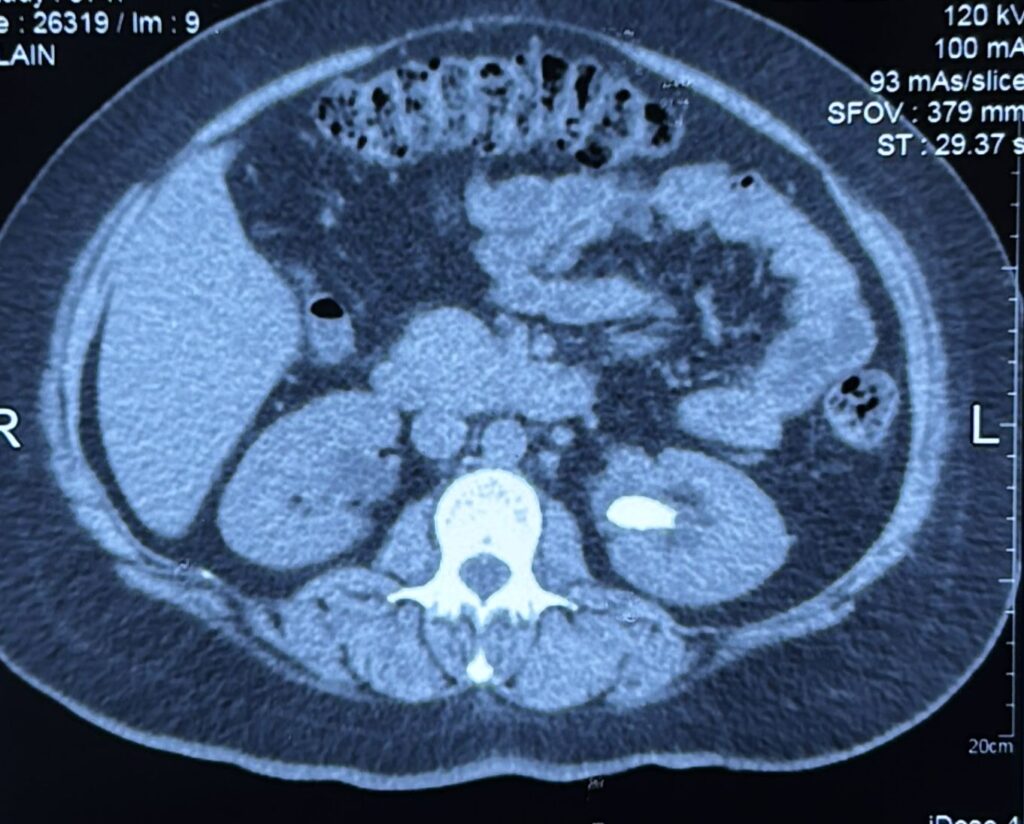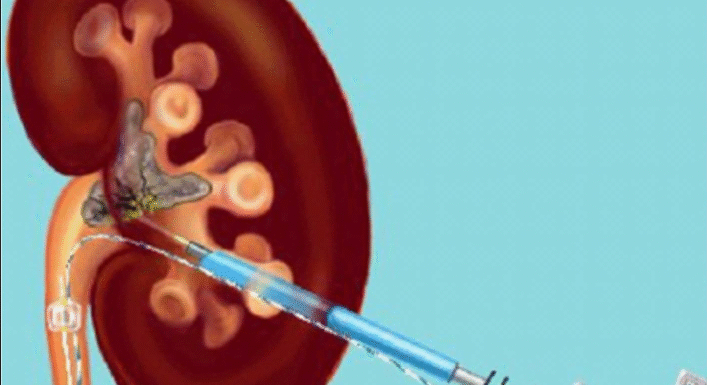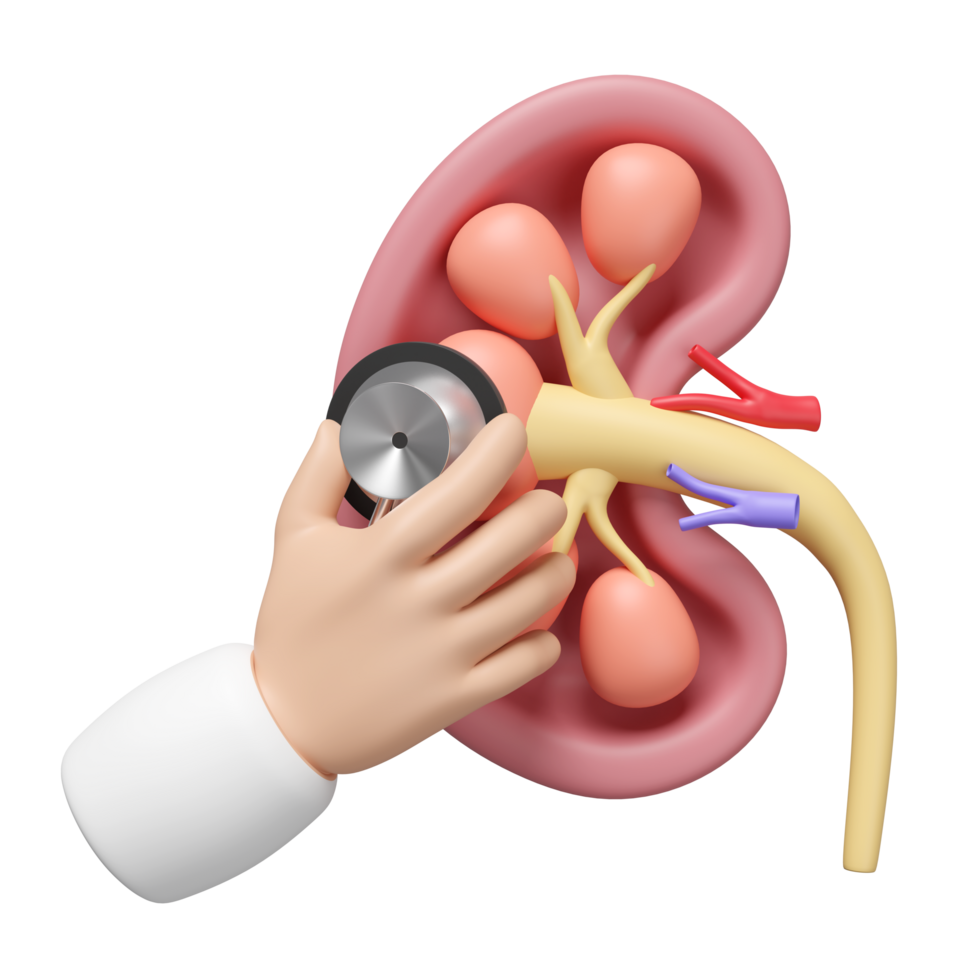Kidney stones :
Small kidney stones may not initially cause any problems. Kidney stones, however, have the potential to enlarge and potentially occupy the kidney’s internal hollow structures. Certain kidney stones remain there and damage kidneys. Sometimes kidney stones which are small in size can pass in to the ureter. (The tube that connects the kidney and bladder is called the ureter.) The stone may be expelled from the body through urine if it makes it to your bladder. Urine flow from that kidney is blocked if the stone lodges in the ureter.
What are the Symptoms of Kidney Stones?
- Sharp, cramping pain in the side and back is a common sign of kidney stones. This sensation frequently shifts to the groin or lower abdomen. Usually, the pain comes on suddenly and in waves. As the body works to remove the stone, it may come and go. Additional indications of kidney stones include:
- A strong urge to urinate.
- More frequent urination or a burning sensation during urination.
- Dark or red urine caused by blood. (Occasionally, there are very trace levels of red blood cells in urine that are invisible to the human eye.)
- Vomiting and nausea.
- Men who have pain at the tip of their penis.
What are Kidney Stones Made of?
Kidney stones come in many types and colors. The way your kidney stones will be treated depends on the type of stone you have. The path to prevent new stones from forming will also depend on your stone type.
calcium stones (80% of stones)
Uric acid stones (5–10% of stones)
What Causes Kidney Stones?
How are Kidney Stones Diagnosed?
Blood and urine tests:
To determine if you have a kidney infection or not, a urinalysis is also performed. Other imaging tests could be utilized if your kidney stone or stones are in an awkward place. Tests for blood and urine Your healthcare professional may collect blood and urine samples for testing following a thorough history and physical examination. Blood testing can assist in determining whether your stones are the result of a medical condition. To determine whether you have a urinary tract infection or crystals that are typical of certain stone kinds, your urine can be examined.
Urine can be collected for 24 hours if you are at a high risk of developing stones in the future. Your urine’s concentrations of various stone-forming substances will be determined by this test. Your doctor can use the test results to prescribe medicine and a healthy diet to help you avoid stones in the future.
Imaging examinations
A medical professional may request to view recent X-rays or order a new one when they see you for the first time and you have previously had stones. This is what they’ll perform to check for urinary tract stones. To monitor potential stone growth, imaging examinations may be conducted repeatedly throughout time. If you are experiencing pain, hematuria (blood in your urine), or recurrent infections, you could also require this test.
CT SCAN SHOWING LEFT KIDNEY STONE
Analysis of stones
Your doctor might wish to test it if you pass a stone or if a stone is surgically removed. The sort of stone will be identified by testing. Your healthcare professional uses this information to determine the best course of action for preventing stones in the future.
Get treated
MEDICATION
Operation
If the stone does not pass, surgery may be required to remove it from the kidney or ureter.
• The stone is interfering with kidney function; the discomfort is too severe to wait for the stone to go away. If there is no discomfort or infection from little kidney stones, they may be ignored. Some decide to get their little stones taken out. They act in this way out of fear that the stone may suddenly begin to pass and hurt. If kidney stones are obstructing the kidney’s ability to produce urine or are causing recurrent infections in the urine, they should be surgically removed. These days, surgery frequently entails few or no cuts, little discomfort, and little time away from work. The following procedures are used to remove kidney or ureter stones:
Shock Wave Lithotripsy (SWL)
Kidney and ureter stones can be treated with Shock Wave Lithotripsy (SWL). To locate the stone, X-rays or ultrasound are utilized to focus shock waves on it. The stone typically breaks into tiny fragments when shock waves are fired at it repeatedly.Over a few weeks, these tiny stone fragments dissolve in the urine. Some kind of anesthetic is frequently required since the shock waves will probably cause discomfort and because respiratory control is required during the treatment. Ask your doctor about the best course of action for your stone because not all stone types respond well to SWL.
URS (Flexible ureteroscopy)# LASER SURGERY:
Kidney and ureter stones are treated using ureteroscopy (URS). A tiny telescope known as a ureteroscope is sent into the bladder, up the ureter, and into the kidney during URS. For stones in the lower portion of the ureter close to the bladder, rigid telescopes are utilized. Kidney and upper ureter stones are treated with flexible telescopes. The urologist can view the stone with the ureteroscope without creating a cut. You remain calm throughout the URS surgery thanks to general anesthesia. Smaller stones are caught and removed by a tiny, basket-like device as soon as the urologist uses the ureteroscope to view the stone. A laser or other stone-breaking equipment can be used to shatter huge stones into smaller pieces if they cannot be removed in one piece. Your doctor might insert a temporary stent in the ureter after the stone has been removed, either completely or in sections. A small, stiff plastic tube called a stent aids in keeping the ureter open, allowing urine to flow from the kidney into the bladder. This tube is internal to the body and does not require a bag to collect urine, in contrast to a kidney drainage tube or bladder catheter. You can start your regular activities in two to three days after returning home on the same day as the URS. Four to ten days after the stent is implanted, your urologist will remove it. To enable self-removal, a string is occasionally left on the end of the stent. Taking your doctor’s advise regarding when to remove the stent is very important. Long-term stent implantation can result in infection and renal dysfunction.

RIRS in Laser Surgery
PCNL, or percutaneous nephrolithotomy :


